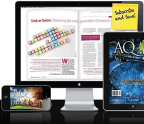Mean(s) testing

Australia is a rich nation – the richest in the world, if we assess it on median income (50th percentile). Yet we have one of the meanest sets of welfare payments of the OECD countries, ranking 22nd out of 29 countries. In this, means testing has become the core model for almost all payments, justified by reducing eligibility to only the truly needy, and thereby reducing costs.
A tax review document described the welfare system thus:
'Means testing is a key characteristic of Australia’s unique transfer system, which is more highly targeted than other OECD countries… Within the current two-part means test — the income test and the assets test — some assets are assessed under both tests, while other assets are assessed only under the assets test'.2
These data and descriptions sit oddly, given the egalitarian ‘fair go’ we have traditionally promoted as part of our national image. While means testing reduces the overall costs of payments, it imposes a wide range of financial criteria on which eligibility and amounts are assessed. These reduce the net benefits of extra income, the Effective Marginal Tax rate.
Even more problematic are the strictly enforced rules named (but are not actually) 'Mutual Obligations'. These are hardly mutual and contribute to shaming the recipients, often leading to wider stigmatisation of those on working-age welfare. The publicity given to the sins of non-compliance are framed as ripping off taxpayers. Therefore, the general public is distracted from structural barriers to employment by the assumption of individual sins.
The expansion of the welfare state by most Western countries in the wake of World War Two, was to counter the damage to social cohesion that was witnessed after the First World War. The Treaty of Versailles effectively punished the losers, yet even the victors weren’t spared the 1929 collapse of Wall Street and subsequent Great Depression.
Mass unemployment and economic dispossession lead to the rise of dictators like Hitler, Mussolini and Franco, and then directly into the
You’re reading a preview, subscribe to read more.
Start your free 30 days





